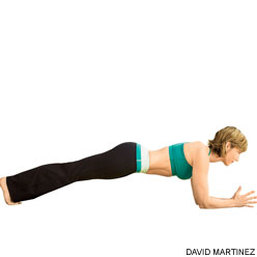 I am so. sick. of. puke. Vomit, throw-up, by any other name would still smell as not-so-sweet. Not to be gross, but nothing else can quite as effectively cause you to wrinkle up your nose with a disgusted look. You guessed it. The stomach bug was the latest visitor to my house. And like most unwanted house guests, he overstayed his welcome, hitting everyone in the house except me. According to the CDC (2013) Noroviruses are responsible for more than half of all reported outbreaks of gastroenteritis in the United States. It's unrelated to influenza, but can have such similar symptoms that we often call it the stomach flu. I don't care what you call it. It sucks. So in between washing all the bedding, delivering bowls and towels to the afflicted, and making simple veggie broth soups for those on the mend; I made tea. Which brings me to my lovely herb of the week. Ah Chamomile. So simple, so pretty, so delicate. But not really. This herb is actually a hard hitter for any kind of digestion issue. Here's the breakdown: Scientific Name: Matricaria recutita Common Names: Chamomile, German Chamomile, Wild Chamomile Description: Chamomile has a branched, erect and smooth stem, which grows to a height of 15–60 cm. The long and narrow leaves are bipinnate or tripinnate. The small flowers are borne in paniculate flower heads with white ray florets and disc florets that are yellow. Basically, each flower is yellow in the middle, surrounded by white petals. And it smells oh-so-sweet. Blooms: June-August Uses: Carminative, antimicrobial, sedative and tonic. Translation: It's great for gas, bloating, and other digestive issues. It also is a great nerve sedative, and acts as a tonic to the gastro-intestinal canal. Its power is in it's anti-inflammatory effects, which relaxes the smooth muscle, thereby helping relieve nausea. The infusion of 1/2 oz. of the dried flowers to 1 pint of boiling water may be given freely in teaspoonful doses to children. Adults can double that dose. Be sure to cover the tea while it's steeping to save the precious volatile oils. Those with ragweed allergies may want to be cautious with this one. If the stomach bug tries to visit your house, pull out the Chamomile to send him on his way. Just don't send him back to my house. Be Well, Kristin
3 Comments
 The holidays are gone, your relatives are gone, and by now even your New Year's Resolution might have flown the coop. Perhaps the only evidence of the holiday season is that nice round belly you developed from all the holiday indulgence. While it is normal to gain a few pounds over the winter to insulate the body and keep warm, that doesn't mean that we have to lose our core strength. Or our self control with that pint of ice cream! It's really not all about having a flat tummy. Core strength is important for a healthy back and full range of motion as well. Anatomy breakdown: There's the rectis abdominis (the 6-pack) that helps us bend forward. The obliques (on the sides of the rectis) that help us bend side to side. The transverse abdominis (like a corset that goes from diaphragm to the pelvic floor) that helps us do the heavy lifting. And then there's deepest and the longest muscles, the psoas. These babies attach at the vertebra of your lumbar spine, wrap up and around your hip joint, and then secure to your femur at the inner thigh. Tighten that too much and your back will be hurting. So we strengthen, and lengthen for healthy core. Which brings me to the pose of the week: Dolphin Plank. Looks fun, doesn't it? Here's How:
1. Start in Table Top. Hands underneath your shoulders, knees on the floor underneath your hips. 2. Then, drop down to your forearms. Here, your forearms should be slightly narrower than your shoulders, the palms of your hands pressing into the earth. Keep the fingers spread wide. 3. Inhale and begin to straighten your legs, knees lifting off the floor. 4. Exhale, and walk your feet back until your shoulders are directly over the elbows and your torso is parallel to the floor. Press your inner forearms and elbows firmly against the floor. Firm your shoulder blades against your back and spread them away from the spine. Similarly spread your collarbones away from the sternum. 5. Now, press your front thighs toward the ceiling, but resist your tailbone toward the floor as you lengthen it toward the heels. Lift the base of your skull away from the back of the neck and look straight down at the floor, keeping the throat and eyes soft. Stay anywhere from 30 seconds to a minute. Then, release your knees to the floor with an exhale. Rest in Child's pose. A great follow up pose is Bridge, allowing your psoas to lengthen after all that toning. Healthy core, healthy back, and total integration = bliss. Be Well, Kristin |
AuthorI am constantly amazed by the healing power of yoga and herbs. They inspire me to heal, to write, to teach, and to keep exploring. Archives
January 2017
Categories
All
|

 RSS Feed
RSS Feed

